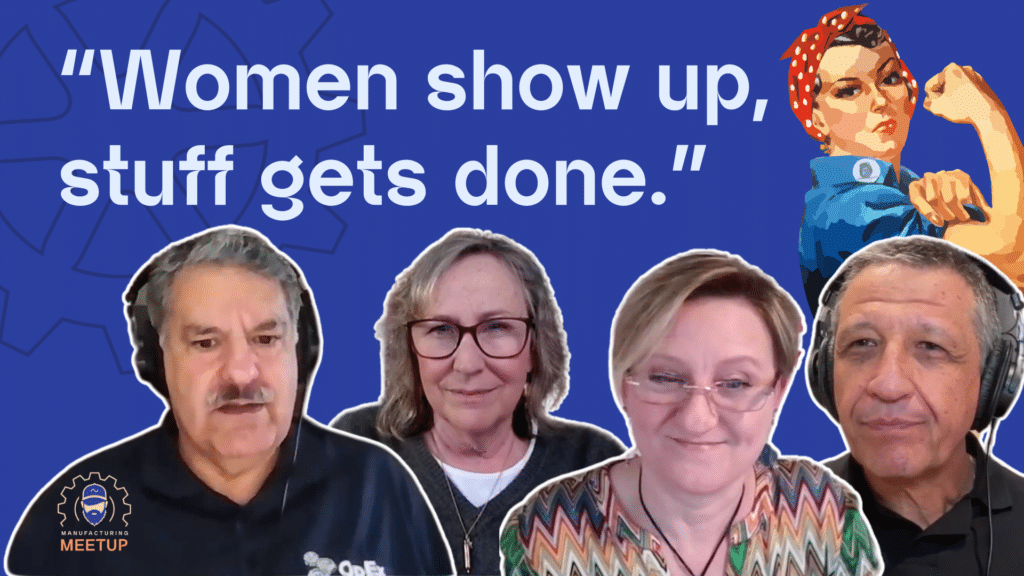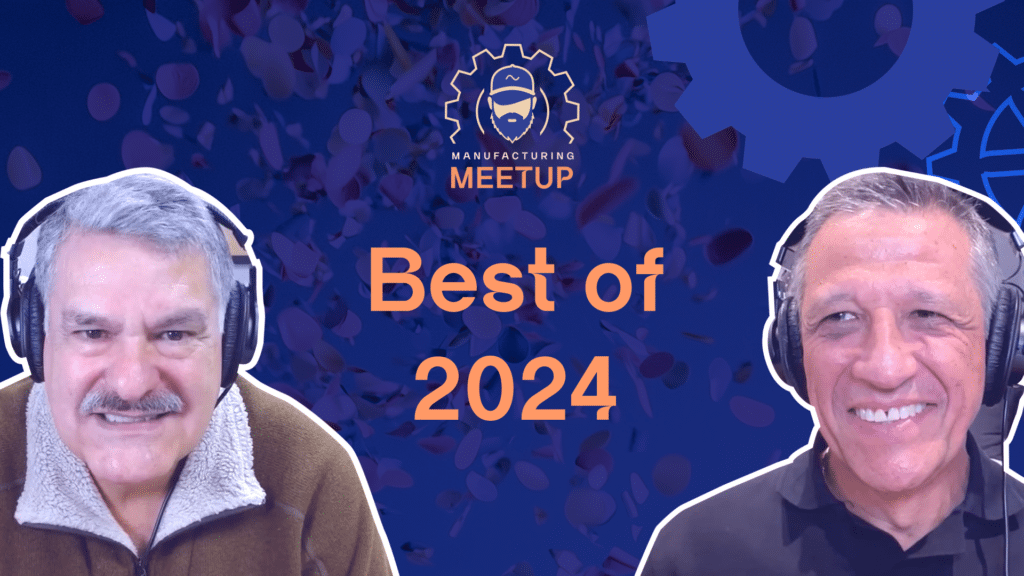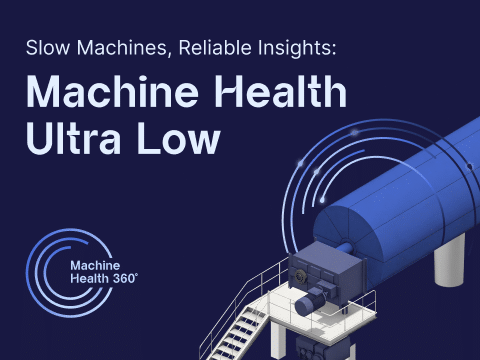Zero Waste, TPM, and 5S
Ed and Alvaro welcome their first-ever guest to the show: David Ballina!
David is a 15+ year veteran of manufacturing, and his resume includes roles with PepsiCo, Keurig Dr. Pepper, and PCA. He is currently the general manager of Operational Excellence Consulting.
Ed and Alvaro kick off the episode by covering the creative ways businesses are reducing waste and contributing to the circular economy. Then, they interview David to hear his insights and learn about his experiences rolling out TPM and 5S on the plant floor.
To keep the conversation going:
Email us: mmu@augury.com
Find us on The Endpoint: endpoint.augury.com
Download the full podcast here:
Apple
Spotify
Amazon Music
iHeart Radio
YouTube Music (formerly Google Play)
Full Transcript
Ed Ballina:
Well, hello there. I’m Ed Ballina.
Alvaro Cuba:
How are you guys? Alvaro Cuba here.
Ed Ballina:
And today we’re coming to you with a special guest speaker that just happens to have the same last name as me, David Ballina, who happens to be one of my general managers, Operational Excellence Consulting, and also happens to be my son. So David, welcome to your first Manufacturing Meet Up podcast.
Alvaro Cuba: Thanks for to have you on board.
David Ballina:
Thanks for the invite. It’s a pleasure for sure.
Ed Ballina:
Terrific. So I think, you know, we’re we’re going to have a really fun filled episode for you. We have our news as always. Alvaro has kind of put together some really cool stuff focused on waste and we’ve got a couple of comments and then we’re going to dive into the topics of, you know, integrated work systems, etc. So welcome to Manufacturing Meet Up Team. This is a podcast. It’s a show where we kick back, we relax, we talk about our downtime and our efficiencies on the shop floor. And hopefully, we learned something from you, you’ll learn something from us. So welcome Manufacturing Meet Up buddies.
Alvaro Cuba:
Thank you Ed. So as you were mentioning guys, we came coincidentally in the week around three different news on waste. And on the first one, it’s a restaurant in London where they are thinking, zero waste. We are not going to throw anything away. So they decided they put the bins out of the door. So, they do that and they call it for the case of animals, nose to tail. And for vegetables and fruits, they call it root to tip. So everything. And just to give you an example, they pick a pumpkin and what they do is the guts go into the sauce, the peel goes into a marmalade, an extra peal goes in seasoning and the pulp is the main dish. So they combine all these with other elements. And as you saw the entire pumpkin, zero waste. The second news is something similar, but in a complete different industry is the fashion industry.
A pioneer on environmental fashion is Gabriella Hearst. And what she’s thinking is exactly the same as the restaurant is we don’t throw away anything. We repurpose. And on top of repurposing, obviously they go into natural fabrics or materials. They track who makes it or from where they come. And even the run show is a zero emission of carbon. So think about these two cases and Ed will bring one additional one, but it’s reverse engineering. And that’s what I think we need to think in manufacturing. When we talk about waste in manufacturing. We are thinking about, okay, how I reduce the materials that are bad quality or how I reduce the material that I, that when the line is not running well, what if we take it to the next level and really start doing reverse engineering?
No? I remember two examples. One, the crew of a gum line. They were through TPM and the crew gained some time out because the line was working great. And then they had with this time in their hands, they just started thinking, what else we can do? And they noticed that when you do the gum and the line, it used to use talc. But talc is a lot of…pollution, is a source of contamination. It’s even dangerous for explosion and all that. So they got with the supplier and other people in R &D and they came with an oil, edible oil. They start putting into that. The product improved. The contamination went to zero.
Wow. The line was running four hours nonstop because there was no contamination, which reduced all the other waste. And, and they did that thinking from the process. You can imagine marketing and the sales guys were thrilled, right? And the other example is same case, but in this case, the crew decided to go to the shelf and see the product on the shelf and they discovered that the cases, and this was a powder beverage. It was too big, too much space in the case and all that. So they came back and they worked with the supplier on a much more case, recycle materials, and they put it in place. So they saved money to the business. They helped the customer to put it better in the shelf. It was a better look in the shelf and they eliminated a lot of waste into the process. So I think it’s a way that we need to start thinking as you are seeing different industries are already moving into that direction. So in manufacturing, we have a big opportunity.
Ed Ballina:
No, that’s, those are great points. By the way, I have tried the rind, watermelon rind and some syrup, not a fan, but I’m sure we could do better in time, but I do like the pepitas. I love the seeds. So switching gears, it was funny because I did not, I did not start out trying to find something that would fit your waste but it just happened that way. That’s the kind of synchronicity you and I have. So I’m a little bit of a fan of 3D printing. Have a couple of them at home. I’ve printed out some things that are useful, some that are just like fun. But, so I’m very interested in the potential and it is growing by leaps and bounds. Today we have companies that will actually print replacement parts for the machines. They may today not have the same life…
For example you print up a gear right or a sprocket on the 3D printers. They probably won’t have the same life as a hardened machined gear but when you’re looking for a part and it’s three months out you know because it has to come from overseas and you can print one that may last you two months. It’s a lifesaver but the stuff is a topic that I wanted to bring up was I saw an article from University of Alaska where they are using 3D printing to print homes and that in itself is not that new. You know that has been experimented with for the last four five years and it’s a funky looking thing. I mean looks like a 3D printer that’s just, pouring concrete back and forth and layers are pretty cool to watch they can literally finish a house in I think seven days.
Alaska is taking it even further because Alaska, as you can imagine, has some very specific challenges when it comes to. yeah. Right. Some of their buildings are permafrost. You can’t allow the heat that’s in the house to go into the permafrost or they will sink. So they are utilizing, essentially, waste materials, to, to enhance and also reuse material. They’re using fly ash. They’re using some amount of consumer waste, right? Different fibers. So it’s so cool that that technology is not only much more sustainable, much quicker. We can build homes for a lot less money. We could truly help with some of our housing issues, but also the fact that we’re now using renewable materials. So.
Anyway, I thought that was a great tie into your story and I’m a little bit of a 3D printing geek. So I went well. If everything goes as to zero waste, go for it.
Alvaro Cuba:
What do you think about it?
David Ballina:
No, I think it’s great, to Ed’s point to 3D printing, it’s a great tool, right? We actually, I experienced that in the field where we had a brand new piece of equipment came overseas, started up the machine. And we had a forced deterioration and unfortunately the manufacturer didn’t even have that part as a spare yet. So we were able to get the drawings from them and 3D print it out of a kind of a carbon fiber material in order to keep us going and running. So it’s great to be able to have that type of technology. And for a waste standpoint, I mean, you know, a lot of companies are going to this 100% you know, recycled plastics, which, you know, are great, but require some complex machinery in order to, you know, put their product into it. So yeah, I think, you know, the, the next wave of our future is of course, is recycling and make sure that we’re able to, whatever things that we discard, we’re able to try and get back into a secondary or third use. So yeah, it’s pretty cool.
Alvaro Cuba:
Thank you, David. And, and, and think guys. We have the power of the reverse engineering in the plants. Yeah. So that, and the other thing is the new generations, they love nature and they love to reduce the waste. So there is a big connection there. Okay. So moving on to our main topic of today, which is the evolution of work systems. And then we’ll have, David, sharing with us his experience on the plant and with TPM and also 5S and other great technologies. But before going to that, just a quick evolution, at least from a century and how it worked in the early 19th century.
We had the machines, but they were still not assemble into lines. And that was a priority. And you all know, Ford did a great job doing that and put the line for a Ford T but fixed mentality and, no innovation. Every car is fine as far as it is black. Yeah. So that’s exactly, know, time come past in, in the forties due to second world war, military style took the manufacturing arena and it was, everything was top down and then output was priority. No, how I triple or quadruple the amount of planes, ships or tanks because we need it, and in fact, we did it. So, those are the first two. Ed, you want to chime in?
Ed Ballina:
Yeah coming out coming out of WW II it was interesting because obviously the Japanese economy was you know was a wreck. Their industry had been largely wrecked, the same thing with Germany, and it was an opportunity for these countries to almost take a green sheet approach to say, okay our factories have been bombed out, you know, how do we start this and do it differently?
And you started getting the birth of things like statistical process control, which obviously the birth of it was in the United States, but the U.S. was on hyper steroids with an economy firing on all cylinders. They weren’t interested in this guy, W. Edwards Deming, right? He took his science of statistical process control to Japan.
And that and, and Japan was like, we have nothing to lose folks, right? Let’s take this technology. And that became the birth of statistical process control. Eventually the base that started the Toyota manufacturing systems. And I’ll never forget, right? When I became, you know, teenager, a little bit older, I could afford a vehicle. I’m sorry, but most of the cars coming out of Detroit were terrible. They had horrible reliability, right? And all that.
But I was chuckling when you talked about the the Model T Ford because at one point in time Toyota only, I’m sorry, Honda only offered five colors, okay? On the Honda now on the Accord, that was it. Oh you want tutti frutti with.. no we don’t make that. And, and and you’re gonna lose business. That’s okay because we see the value of simplicity so but, of course, nothing ever stops, right? And we continued with figuring out once we get these processes working, what about the people, right? How do we engage the shop floor? You know, how do we take a more humanistic view to, engaging more just the brawn and their arms and hands, but their brains and to some degree their hearts. So we started moving up, in collaborative work and, Alvaro, you know, what came next.
Alvaro Cuba:
Yeah. Well. Now you, you, you’ll hear Ed, talking about quality in one side, people in other sides. We talk about production and efficiency. So it was great, but it was dispersed and different, things. So the next evolution came with the TPM or, total work systems that incorporated all of them in one comprehensive program, nine pillars, 11 pillars, or whatever pillars you want, it included this time, culture, and training and people, and then safety and quality, then all the production, and put it in a way that you could start and follow a process to get from the phase zero to phase four and see the evolution. So that was the next one. And it tied with how, if we are doing this in manufacturing, we need to expand it because doing it in isolation in manufacturing doesn’t work. So the thinking that the next evolution of TPM was how I expand these and incorporate the suppliers procurement and then also the supply chain and the customers. What’s next Ed, on the evolution?
Ed Ballina:
These are all building blocks, right? So we started with pretty basic things, right? Got to get the equipment running well, got to get our quality where it needs to be. Then how do we integrate people? How do we create these high performance work systems and great cultures?
And then how do we expand that towards to our suppliers and our customers? Right. So we have better forecasting systems. So we improve, our, our, you know, customer delight or order fulfillment. So it starts looking like end to end supply chain optimization and it takes, you know, the old thing, takes a village to raise a child. It takes more than a village to get these supply chains to run well folks, right? Something as simple as your system, like your systems have to talk to each other. If, you know, in a perfect world, I’m running a bottle line and I bring in empty bottles if I’m not blow molding just in time, just when I need them. But if my system can’t talk to my supplier system and they don’t know that I had a demand change that caused me to change to a different bottle and that gets to them three days later. Guess what? I’m now sitting on a bunch of trailers full of product that I don’t really need right now. And I got to make space for, so this end to end optimization. And by the way, it’s good for all of us, right? Cause our suppliers can deal with less surprises and less just in time and our consumers and our customers get to delight in our customer service and order fulfillment. So we all win while we bring prices down, you know, costs down and bring profits up in service. Alvaro, you got, you got the telescope for the future. Tell us about 4.0.
Alvaro Cuba:
Well, it’s not really the future, no, it’s starting to be the present. I agree with you, we still have a long way to go, but you start to see the components of the next generation, which is industry 4.0, which basically it blurs the boundaries between the physical, the digital, and the biological world. And also if you think now that you have the line and the machine and the people and you start getting the quality, the safety, all what it describes. And now comes all these new technology, you artificial intelligence and faster communication and VR or robotics. And from the other side, it’s coming all this genetic engineering and biotech, which are starting incorporating the people side, no? So the lenses where you’re with the move of your eyes, you can do things, no? Or your voice can activate things. And right now is how we put all that together and take full advantage and even predict what is going to happen. And that’s what I’m sure you all guys in your plants are trying to figure it out, how to start, how to go, how to combine all these pieces and do it in a most effective and efficient way. And Ed and I have been talking a lot about this and will continue because it’s very exciting. Every time we see this coming, the opportunities are huge.
Ed Ballina:
But if I, I just wanted to add a quick little point on this whole what the future brings. So one of the worst jobs that we have in our plants are people have to hand pick cases, right? Cases of product could be 20, 30 pounds. It’s a lot of work. And sometimes you’re picking one at a time. Well, there has been some work done with exoskeletons, right? And it’s not quite there yet to help remove the load and how, you know, how much energy it takes.
But now they’re taken to a new level where they actually have folks that have had brain implants, neural implants that were quadriplegics that are allowing them to actually walk with some of this. Anyway, I just had to come up with that, but I’m going to switch over to Alvaro because we’ve got some questions for David.
Alvaro Cuba:
Absolutely. I just read the last piece. I just said the new goggles for swimmers, that the goggles is telling exactly what parts of your body are you moving and which ones are you moving the right way and which ones you are moving the wrong way and how to correct it. So guys, this is now as we were saying, but we wanted to have David and thank you again, David for being with us today. David has experience. We always want to bring examples, concrete things, not only this talk, but experience on the field. And David has this experience, especially with TPM in his plant times. So David, really, you are in the plant, how TPM rollout really works from inside?
David Ballina:
Yeah. So the first thing that you you kind of have to do with a rollout is to understand where you’re at now. What is your current status in the plant? You know, whether you, have any preventative maintenance programs already in place, you know, safety, quality perspectives, all that ties together when it comes to kind of that first initial rollout, just to see what you’re doing. And then initializing the training and understanding the fundamentals of TPM, right? So getting the, not just the frontline people, right? But the management, you know, upper management involved, trained and understand kind of what the TPM process brings to their plant. So some great things happen when you roll a program out with TPM in a plant that’s never done it before. So it was interesting. I got to do that with one of the career positions I had in my life.
Alvaro Cuba:
So David, what kind of barriers that you encounter, know, as you obviously, anytime you try to roll something out new, there’s always the fear of change and all that. But, you know, what were some of the issues that you saw?
David Ballina:
One issue that I saw was actually a plant that embraced a very similar process to TPM. But then kind of laxed a bit over the years due to, you know, whatever COVID was a great example of that, right?
Where everybody was, let’s get everything out, do what we got to do. And then kind of rolling it back in saying, guys, we’ve got to dive back into this. Here’s some other processes, you know, some new kind of ideas. And it was getting some of those tenured employees to go, well, Hey, we we’ve tried this before and it worked for a little while, but things kind of went sideways, whatever the case may be. And then bringing it back to them, changing that attitude, is probably one of the biggest struggles that I’ve seen when it comes to that.
Alvaro Cuba:
It’s interesting because probably Ed and I, I’m sure we saw exactly the same. You are seeing it. So it always goes down to people and yeah, change management. It’s it’s critical. On, on the other hand, David, on the benefits that it generated and on the perceived benefits, no, not, not always the same thing.
David Ballina:
Yeah, so benefit wise, I mean, we did a deep dive, a Kaizen event on a labeler once and again had been deprived a bit, right? We were trying to run, get a lot of product out the floor and by doing that deep dive, I’m sorry, not a labeler, it was a sleever. We were able to clean up a bunch of contamination, getting the whole area clean and organized and also getting that machine back to like new condition, which helped the operators when it came to finding things that were problems, right? You know, by clearing the area and being able to see what you’re looking at instead of having a bunch of buildup of grease or dirt or whatever the case may be, that gave the opportunity to go, that’s not right. That’s not normal. And it also gave the operator that stronghold of, you’re cleaning to inspect. And you’re inspecting to detect. And you’re there to detect defects. Right? So that also gives them that buy in and understand that the machine works good. I’m able to pick things up quick and get it fixed and resolved quickly.
Ed Ballina:
Awesome. So we probably should have done a quick bio on David, but we like to work things fluidly on this podcast as you may have figured out. So we decided to show you the guy and show you his experience. And then tell you a little bit about him. So 10 seconds or less, David has 15 plus years of experience in the beverage industry with Pepsi, Keurig Dr. Pepper, and even spent some time with a corrugated manufacturer packaging company, PCA. And I snagged him away a year and a half ago to be my GM for Operational Excellence Consulting. So I’m thrilled. And that’s a segue to his last question, which is, talk about the importance of 5S as the foundation because this guy here is the guy that laid out our valve rebuild shop. Okay. I trusted him. He laid it out. I gave him some input because of course I can’t just like not have an opinion. But he was good, you know, and he did an amazing job applying those 5S principles. We talked about one, one other time, as you can see, I’m on the road now. We want to show you some videos, some, some pictures of our shop, because we’re really are very proud of it. And it really is David’s, you know, baby. So David, the importance of 5S as a foundation, then you can bring it home.
David Ballina:
Yeah. So real quick, you know, a great example that I did in a plant, in the AM meeting, kickoff. We had an AM event. We sat down and I had two tool bags with me. Okay. One tool bag had a bunch of tools in it, wrenches mixed, you know, kind of loosely in the bag. And then I had another organized one. We brought an employee up and I gave him the first bag. Said, I want you to find me a 10 millimeter wrench. It took him and we clocked him, you know, took him a good four or five minutes to find a, kind of dig through, and find the right tool, right? Without dumping it all over the table.
And then we clocked him on the next one where he pulled out a completely organized, labeled, clear, understood where everything was out on the table and said, okay, now find me a 10 millimeter. Less than two seconds, right? Cause it’s visual it’s in its place. It’s where it’s supposed to be. And that’s the whole premise of 5S you know, between the sort, set in order, shine, standardize and sustain. The biggest thing is making sure that everything’s in its place. It’s there when you need it. And it reduces the time for the repair, or for that operator to get whatever supplies that they need in order to do their job successfully and in a timely manner.
Alvaro Cuba:
Terrific. Well, yeah. And, and, and in 5S the other thing is you involve the person and now, and, it creates the culture. Yeah. The same in, in, safety. You have to do it this way. The other ways they do it and they appreciate the benefits for themselves. Then it goes. Right. So.
We really appreciate David, you sharing with us these very concrete examples from the floor, it’s all these broadcasts is about. We are talking to people in the plants and we want them to hear it. And as you hear in the evolution, it’s kind of what we follow when we are in a plant. You start with…production first and then you notice that no, if you don’t have quality or you are not lean, it doesn’t work. Then you have to involve the people. Now, once you involve the people, have need a system to make it all work. And the system has to account for the culture. And finally, you start putting some technology onto it.
But that’s the sequence and you alluded to that David, no? So it has to be a sequence because if you try to jump in technology, without having the basis, you are technologically making more waste and creating more problems. Exactly. So, and then it comes this industry 4.0 that allows us or gives us the vision of much more to come in the future. Any final comments?
Ed Ballina:
No, I think you capture that very, well. A lot of us are engineers, right? So we get attracted by shiny objects and new technology. But to Alvaro’s point, sometimes that just makes you make bad stuff faster for more money. So, let’s get some of the basics in before we necessarily go find the shiny object technological fix.
Well, I think that’s a wrap on today’s episode. Thank you so much for joining us, joining Manufacturing Meet Up. Hopefully these are getting a little bit more interesting and shorter. So if you enjoyed this episode, please follow or subscribe.
Like it if you’re on YouTube, leave us a review if you’re listening on the other social media and share the podcast with your friends so we can grow this meet up. Alvaro?
Alvaro Cuba:
And to keep the conversation going you can email us as mmu at augury .com or find us on The Endpoint and the most important part guys is that you participate, you like it, share it with others and also please send us your comments and send us your ideas and we’ll take it into the show and we’ll be grateful for that. Thank you for the episode today. Thanks again, David for being with us. Anytime. It was awesome. Bye. Thank you. Bye bye.
Meet Our Hosts

Alvaro Cuba
Alvaro Cuba has more than 35 years of experience in a variety of leadership roles in operations and supply chain as well as tenure in commercial and general management for the consumer products goods, textile, automotive, electronics and internet industries. His professional career has taken him to more than 70 countries, enabling him to bring a global business view to any conversation. Today, Alvaro is a strategic business consultant and advisor in operations and supply chain, helping advance start-ups in the AI and advanced manufacturing space.

Ed Ballina
Ed Ballina was formerly the VP of Manufacturing and Warehousing at PepsiCo, with 36 years of experience in manufacturing and reliability across three CPG Fortune 50 companies in the beverage and paper industries. He previously led a team focused on improving equipment RE/TE performance and reducing maintenance costs while improving field capability. Recently, Ed started his own supply chain consulting practice focusing on Supply Chain operational consulting and equipment rebuild services for the beverage industry.




